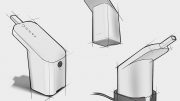Driving traffic to your website requires ample planning, a significant investment of resources, and creative copywriting. Getting a customer to convert when they reach your website is another issue entirely. Many medical providers find success in acquiring traffic but struggle to push conversions. Here are some practical tips to help you boost conversion rates for your healthcare website.
Refine Your Messaging
Visitors to your website should have a clear idea of your value proposition, either when they click through a paid ad or as soon as they land on your site organically. Your messaging is what resonates with potential patients on an emotional level— and emotions drive conversions.
This consideration is critical for healthcare providers. Seeking medical care typically stems from discomfort or pain; it’s a point of vulnerability for patients. Creating messaging that speaks to their pain points and exudes a welcoming, trustworthy, and relevant atmosphere is essential.
Revisit your copy and determine whether a potential patient can derive value from the first sentence. If not, it’s time to rethink your wording.
Prioritize Website Design
Your website design plays a huge part in conversion rates. In terms of medical website design, it’s essential to have clear directives on where patients should go for relevant information. If your site is difficult to navigate or unclear, your conversion rates won’t grow.
Localization is another essential feature for attracting qualified leads in the digital era. While your content might drive a lot of traffic, it’s not helpful if the majority of your traffic comes from halfway across the world. Ensuring your content is optimized for local SEO is paramount for success.
Creating a website that converts patients while ranking with search engine crawlers is an art and a science. Consider working with a specialist to craft a website that resonates with potential patients and reaches the desired target audience.
Use Full-Screen Landing Pages
One of the most common mistakes healthcare providers make when crafting paid ads is the link destination. A paid ad shouldn’t link to your contact page or a generic homepage. Instead, create custom landing pages that nourish the lead and encourage them to convert.
It’s also helpful to use full-screen landing pages. A designer can craft a landing page that removes navigation to other pages as these can create distractions. Instead, include pertinent information on the full-screen landing page to push conversions.
Do A/B Testing
How will you know which messaging, CTA, or page style pushes more conversions? By testing it.
A/B testing is the process of comparing different copy, colors, messaging, etc., to determine which is more effective. For example, you might release two ads for a week to a smaller audience to identify which is more effective. You might find that one ad pushes more traffic to the site while the other has less traffic, but more conversions. When the sample test is done, you can decide to craft a new ad featuring those elements or push the one with higher conversions to a broader audience.
You can also experiment with website elements, such as button text and color or copy variations. Use Google Optimize to create temporary website variations for different visitors to see and then track the results. You can use this information to adjust your core website accordingly.
Use Personalized CTAs
Personalization has been a buzzword in digital marketing for the past couple of years. Yet, the buzz is anything but unfounded. Marketers have discovered that the more personal an offering feels, the more likely someone will convert. Some of the most common ways to incorporate personalization are through personalized recommendations in eCommerce or including the individual’s name when possible.
You can also incorporate personalization into your call-to-action (CTA) by using first-person language. A strong CTA is essential for getting conversions. People are psychologically responsive to clear actions and expectations. Exploratory research has also shown that CTAs with first-person language is 90% more effective.
If your landing page has a CTA to book a free consultation, it may say “book a free consultation” or “schedule your free consultation.” Instead, try “book my free consultation.” When in doubt, use A/B testing to determine which is more effective for your audience.
Highlight Testimonials
Testimonials and reviews are integral components of healthcare marketing. As mentioned previously, patients who reach out for services are often coming from a place of vulnerability. Accessible testimonials and reviews from real patients will help them feel more confident in converting.
Consider embedding reviews from Google on your website and landing page. While carefully crafted testimonials with a patient picture are helpful, the modern consumer is a healthy sceptic. Google reviews are widely trusted among consumers and could be the difference in converting.
Final Thoughts
There’s no such thing as perfection when crafting medical marketing collateral. The best way to improve conversion rates is to continuously refine your messaging, run tests, and work with the experts. Track your data and analytics to determine what’s working and use this information to drive your strategy.





